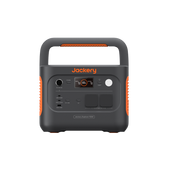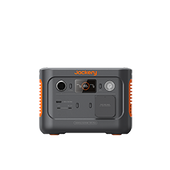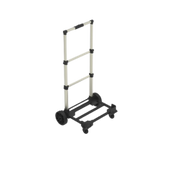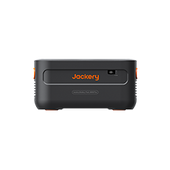Kick-Start Preparation for Home Power Backup System
To kick-start your home power backup system in Europe, assess your appliances and devices. Identify loads that must be active during a power outage. Focus on safety, communication, and comfort items. For instance, refrigeration units losing power for a few hours may cause food spoilage in multi-compartment fridges and deep freezers in European homes. Next, consider heating systems if you count on electric boilers or gas heating with electrically controlled valves or pumps. They are crucial in colder months when power cuts are more disruptive. Other items include low-wattage LED lighting for illumination, routers/modems for communication, computers, and office equipment if you work remotely. Each device will have wattage requirements, which are listed on their back panels or in technical manuals and measured in W or VA. They can be multiplied by the hours of usage during an outage for the watt-hours per device.
Once you identify the loads, calculating the capacity for your backup system involves energy calculations according to the total wattage and runtime per appliance. For instance, a European refrigerator may consume around 100-200 watts. Meanwhile, gas boiler circulation pumps can use about 60-100 watts. Assuming a four-hour power outage, you’d need a minimum of 400-800 watt-hours for refrigeration alone and 240-400 watt-hours for heating support. To add a buffer, you may increase this estimate by around 20-30% for inefficiencies in inverters or battery performance over time. It means that a home for a backup would require a capacity of at least 2 kWh if it includes multiple high-priority appliances. Lithium-iron-phosphate batteries are ideal for such capacities for longer life cycles and deeper discharge rates than traditional lead-acid batteries. Also, solar panels can supplement the energy supply during lengthy outages. Each panel's output supports continuous charging during daylight hours for lower reliance on stored power alone.
Component of A Home Power Backup System
Solar Generator
In a European home power backup system, a solar power generator has high-efficiency PV panels and an integrated inverter to handle intermittent and variable power production for solar energy in Europe’s cloudy climate. The solar generator converts sunlight into DC to channel through an MPPT charge controller for efficiency during partial shading or overcast conditions in Northern and Western Europe. The energy is converted to AC by an inverter that can handle European grids’ sine wave standard and voltage frequencies (230V, 50 Hz). European systems may use microinverters to adjust power generation at each panel to prevent system-wide efficiency loss when one panel is shaded. Moreover, bifacial solar panels capture sunlight from both sides and can boost energy output in diffuse sunlight conditions in higher-latitude regions.
In a power outage, the solar generator, with a grid-forming inverter, can keep power flowing while switching to “island mode.” It allows the backup system to work independently of the grid. For grid interaction, European regulations need systems with anti-islanding protocols. As the European Union pushes for low-carbon solutions, hybrid solar generators with LiFePO4 batteries are popular. They offer high cycle life in variable climates when long-term power outages occur. Such components with an EMS allow real-time power monitoring, adaptive charging per weather forecasts, and power allocation prioritization so the generator can bear lengthy outages.
Remote Control Software
The remote control software in a European home power backup system helps in energy monitoring, prioritization, and system diagnostics during a power outage. It is an energy management platform with IoT devices for real-time communication between system components and the end-user. Essentially, remote control software uses ML systems and predictive analytics to anticipate peak usage patterns and match battery storage and solar input for use. For instance, during long, cloudy periods in Europe, power flow is automatically adjusted to prioritize primary loads over secondary ones for autonomy during a power outage. Furthermore, the systems may feature grid interaction capabilities so users can respond to variable electricity pricing schemes (TOU pricing) in Germany. That’s where electricity prices fluctuate according to demand and supply.
While adjusting the battery charging and discharging timing, the software lowers costs and betters grid resilience. For the technical user, remote control software allows in-depth customization of defining voltage thresholds for battery cut-off to lengthen battery life or setting SOC reserve levels for battery health. Integration with weather APIs is also standard. Forecasted solar irradiance data guides charging decisions and battery usage. On the back end, the software is based on a secure cloud server with end-to-end encryption for GDPR compliance in Europe. Any drop in panel efficiency or battery degradation is flagged instantly so the homeowner or technician can fix issues before they are critical. It benefits regions with recurrent power outages for system reliability.
More Battery Storage
Battery storage is key to a home power backup system when handling power outages in Europe with varying grid reliability between countries. A larger storage system may incorporate lithium-ion or solid-state batteries for deep-cycle usage to discharge to lower SOC levels without degradation. In European backup systems with extended storage capacities, battery banks might be scaled to support loads for hours or days. It can enable homeowners to scale their backup capacity per need and grid reliability in their region. E.g., users in Southern Europe may need less storage than Northern European users. Such batteries are configured in a high-voltage array to curtail power loss due to resistance and optimize the inverter’s efficiency. More storage enables “load shaving” during peak hours. Stored energy is discharged to cut grid reliance and utility costs.
With bidirectional inverters, users can sell surplus stored energy to the grid under feed-in tariff programs. It helps offset costs and support grid stability during peak demand. Setups include a BMS that monitors each cell’s voltage, temperature, and current for balanced charging and avoids over-discharge to protect storage systems. With more extensive storage systems, redundancy is vital. Many configurations incorporate multiple battery modules in parallel, so system sections can be active during a fault. It is critical during power outages. The configuration is about capacity, along with depth of discharge, cycle life, and operating under varying temperature ranges. It confirms that the backup system may handle repeated outages without losing performance.

Gas Generator vs. Solar Generator: Which to Choose?
In Europe’s current energy backdrop, selecting between a gas generator and a solar generator for a home power backup system demands considering grid stability, emissions targets, and energy resilience. Gas generators use natural gas and deliver power through internal combustion. It guarantees steady wattage and handles high surges for stretched power outages and larger appliance loads. Yet, reliance on gas generators is challenging to the EU’s 2030 climate target of cutting GHG emissions by 55% and attaining net zero by 2050[1]. While LPG can be “cleaner” with 15% lower emissions, it clashes with Europe’s carbon reduction initiatives. It may face supply chain instability due to regional political tensions affecting imports. Besides, the EU’s Renewable Energy Directive incentivizes renewable sources, which renders solar attractive. Solar generators and LiFePO4 battery storage systems are emission-free, which is in accordance with EU policies.
While solar systems face limitations in energy generation during cloudy periods or winter months, a modular, expandable battery array can provide a practical workaround. For example, some models can now reach 12 kWh capacities for most household needs during a short power outage. Plus, many countries offer subsidies for solar installations as part of the EU’s decentralized energy systems to lower the upfront cost for homeowners. For those with limited roof space, vertical bifacial panels or small-scale wind turbines can complement solar for year-round generation. However, these may require planning permits in urban areas. Inverters with intelligent metering systems enable on-grid and off-grid transitions to prevent excess power from overloading the home network and allow energy sell-back during peak production for energy security across the grid.
Jackery Solar Generator 2000 Plus
For a home power backup system in Europe, our Jackery Solar Generator 2000 Plus delivers resilient, expandable energy during a power outage. Its capacity ranges from 2 kWh up to 12 kWh with battery packs. The generator supports high-demand devices with a constant power output of 3000W and a surge peak of 6000W. So, you can count on it to power portable air conditioners, electric pressure cookers, and drones. The IBC solar charging technology enables a solar charge in 2 hours with six Jackery SolarSaga 200W solar panels for reliable, off-grid energy independence. We prioritize durability with the LiFePO4 battery for a 10-year lifespan, 4000 charge cycles, to 70% capacity. Our ChargeShield tech boosts battery life by 50% through variable-speed charging. With TÜV SÜD’s carbon footprint verification, we commit to sustainable energy solutions that back European standards, including two-round-pin sockets and compatibility with 230V-50Hz devices.

Steps for Setting up A Home Backup Power System
Positioning Solar Panels with Precision for Optimal Power Collection
Finding the right spot for solar panels is about sun exposure, exploiting sunlight angles, and avoiding shading throughout the day during winter with limited sunlight. In Europe, seasonal sun availability varies, so aim for a south-facing setup at a tilt angle specific to your latitude. It might be 30-45 degrees for most European locations. Adjustments can be necessary for particular regions. For instance, northern Europe may benefit from a steeper angle for lower sun angles during shorter winter days. Use microinverters or power optimizers to cut shading effects from neighbouring buildings or trees. It gives uninterrupted energy collection on overcast days. Install weather sensors or a forecasting API with your system’s monitoring software so you can anticipate power outage scenarios due to weather. Real-time weather data integration optimizes your system’s performance, letting you prepare battery reserves ahead of low solar production periods.
Connecting and Monitoring the Battery Bank for Real-Time Insights
Once solar panels are installed, a high-capacity LiFePO4 battery bank helps store and manage backup power. Calculate your household’s power needs during a power outage so the battery capacity meets at least 24 hours of backup power according to loads. Wiring the battery bank to a hybrid inverter provides a shift from grid to battery power. Monitoring smart APP that tracks charge levels, discharge rates, etc. Set up automatic alerts to signal critical levels during discharge cycles to prevent battery degradation from overuse or deep cycling. Integrate a BMS with thermal sensors for stable battery temperatures during cold European winters, when batteries can lose efficiency. The system will monitor the charge status and allow optimal charging times per weather patterns. It extends battery life and guarantees reliable power outage support.
Positioning Charged Batteries Close to Key Equipment for Direct Access
Placing charged batteries near appliances or wiring panels diminishes energy loss during transfer. It is an often overlooked aspect in backup setups. Use short, high-gauge cables for lower resistance losses. The battery bank should also be housed in a well-ventilated space to prevent heat buildup near devices with high standby power needs. Remember that medical devices require uninterrupted power. For these, set up automatic switches to route battery power as soon as a power outage occurs. Test connections to critical appliances so they are securely wired and that the battery bank delivers steady voltage. Install an ATS to manage load transfer during an outage so your system can shift loads to battery power without manual intervention. Consequently, it decreases response time during an unanticipated power outage for the continuity of key systems in your home.
Conducting a Full System Test to Verify Backup Reliability
Before using the backup system, simulate a power outage to confirm the reliable transition between grid and battery power. Disconnect the main power supply and observe if the system responds with zero or negligible delay in emergency power supply to devices. Measure voltage stability across all connected appliances so your inverter upholds dependable output without overloading the battery. Use load-testing equipment to assess the backup system’s capacity under erratic load conditions. Recording battery drain rate, voltage stability, and inverter efficiency. Compare test data with manufacturer specs to identify discrepancies that might indicate setup issues. Further, examine inverter and battery heat levels under high-load scenarios. Excessive temperatures can decrease life and compromise reliability during a long power outage. It helps diagnose weak points in your setup for uninterrupted performance when an actual power outage occurs.
Establishing Routine Inspection and Maintenance for Longevity
Inspection and maintenance capitalize on your backup power system's endurance in areas prone to repeated power outages. Develop a monthly inspection checklist. Review battery health, wiring integrity, and software updates to keep your system functioning. Clean the solar panels quarterly to remove any buildup that could shrink efficiency. It is relevant in urban or industrial areas where airborne particles can accumulate. Check battery electrolyte levels and top off as needed. However, lithium-based systems should be inspected for voltage drift across cells. Update the inverter and monitoring software. Manufacturers may release patches that augment efficiency or fix security vulnerabilities. The battery management system should also be recalibrated every six months to account for battery degradation. A maintenance routine certifies that the system will work for peace of mind and that it will be ready to manage any power outage for the longest time possible.
Conclusion
With 12 years of dedication and adherence to strict standards, Jackery’s product is meticulously crafted for excellence. If you want to learn more information and purchase Jackery solar generators, please visit our website and equip yourself with the best power backup system.
References
- 2030 climate targets. Available at: https://climate.ec.europa.eu/eu-action/climate-strategies-targets/2030-climate-targets_en#:~:text=In%202023%2C%20the%20EU%20adopted,climate%2Dneutral%20continent%20by%202050.(Accessed: November 8, 2024)





































































